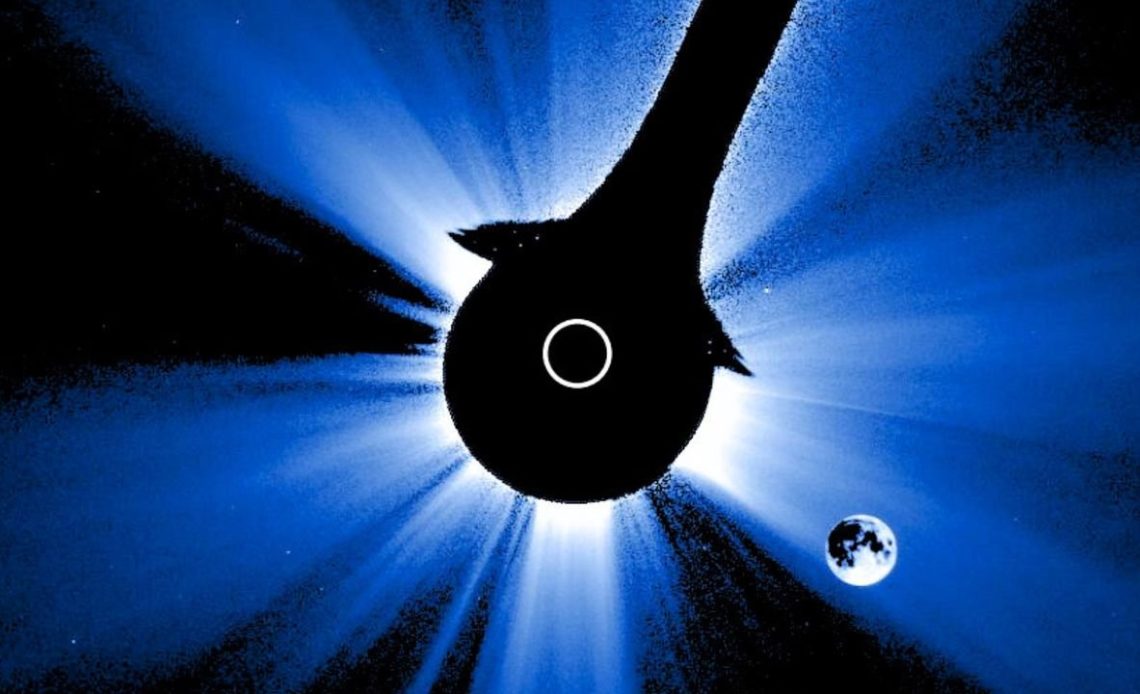

On Sept. 21, while skywatchers on Earth were eagerly watching a partial solar eclipse unfold, NOAA’s space weather sentinel GOES-19 was also keeping watch from orbit.
From its vantage point high above Earth, the satellite’s Compact Coronagraph-1 (CCOR-1) recorded something unusual: a natural solar eclipse from space.
CCOR-1 is designed to create its own “artificial eclipses.” Like all coronagraphs, it uses an occulting disk to block direct sunlight so scientists can study the sun’s faint outer atmosphere, known as the corona. But this time, the moon itself scootched between the instrument and the sun, allowing CCOR-1 to briefly witness a true solar eclipse in space.
Eagle-eyed observers among you might have noticed the resulting imagery looked rather strange. Instead of just the solar disk vanishing, the entire corona disappeared. That wasn’t a cosmic anomaly; it was a consequence of image processing.

“Normally, each image seen by CCOR-1’s detector is a combination of the corona and bright sunlight scattered within the telescope,” Bill Thompson of NASA’s Goddard Space Flight Center told Spaceweather.com. “A model of the scattered light is subtracted to reveal the corona. During the eclipse, the scattered light went away, but the subtraction proceeded as if it hadn’t. It ended up subtracting too much.”
Because CCOR-1 orbits Earth, the moon can occasionally slip between the instrument and the sun. That isn’t possible for coronagraphs stationed farther away in space, such as SOHO at the L1 Lagrange point, because the moon would never pass through their field of view. To our knowledge, this may be the first time a space-based coronagraph has ever recorded a natural eclipse.
The moon crosses CCOR-1’s field of view roughly once a month, usually in a straight line. But this time, its path appeared to zig-zag. That odd trajectory wasn’t caused by the moon but was rather likely the result of a scheduled yaw-flip maneuver that took place on Sept. 22 to help calibrate the spacecraft. The maneuver is designed to alter GOES-19’s attitude, its orientation in space, and could have made the moon’s otherwise straight path appear crooked in the coronagraph’s processed imagery.
Although the flip occurred the day after the eclipse, it’s possible that preparations for the maneuver the day before altered GOES-19’s attitude, its orientation in space, and made the moon’s otherwise straight path appear crooked in the coronagraph’s processed imagery.
Author: Daisy Dobrijevic
Source: Space.com
Reviewed By: Editorial Team



